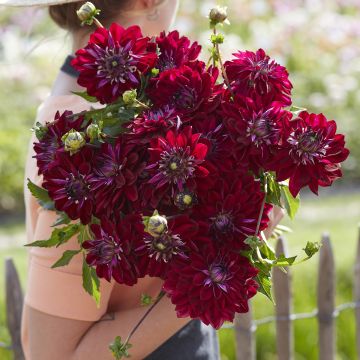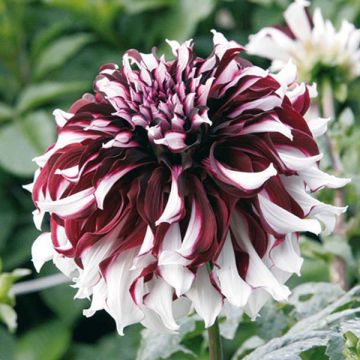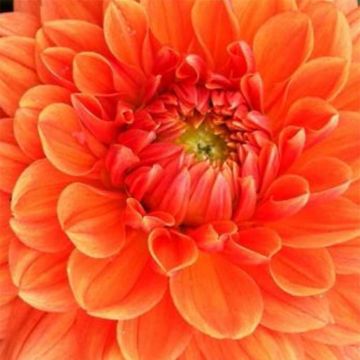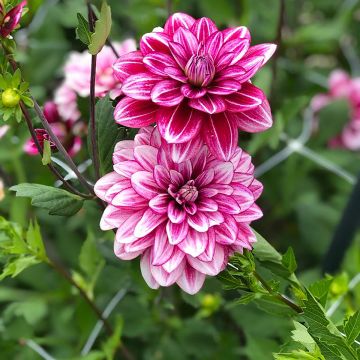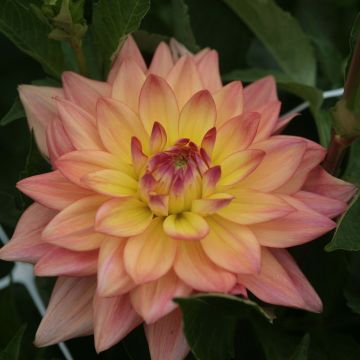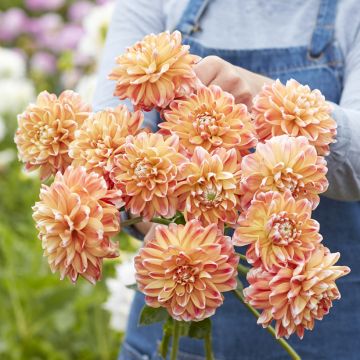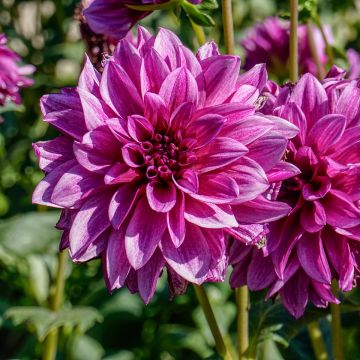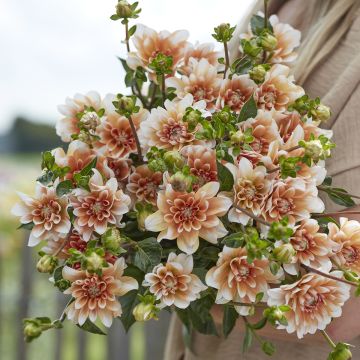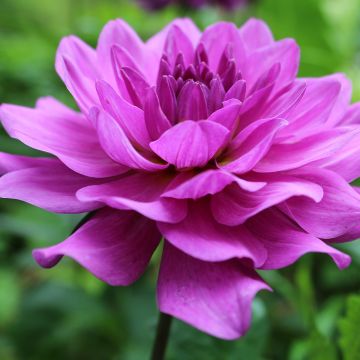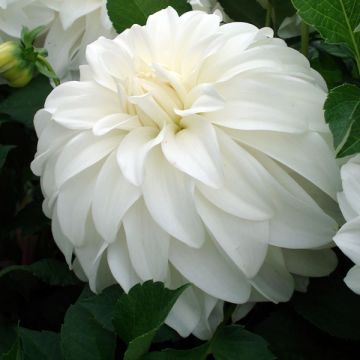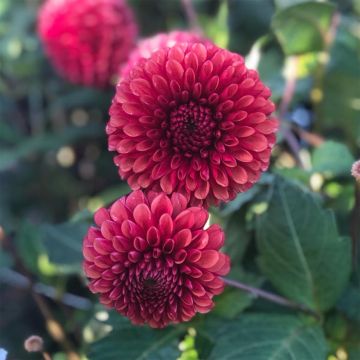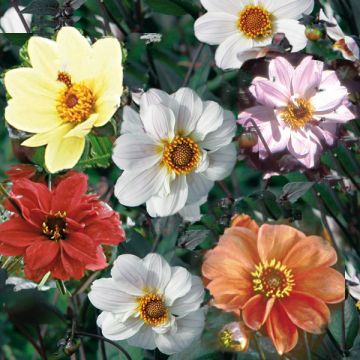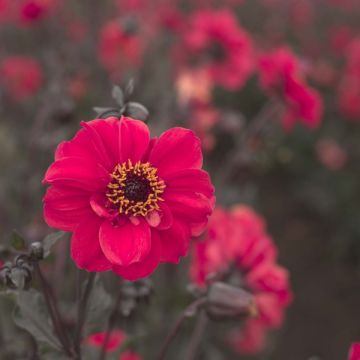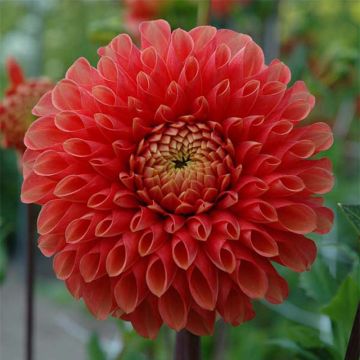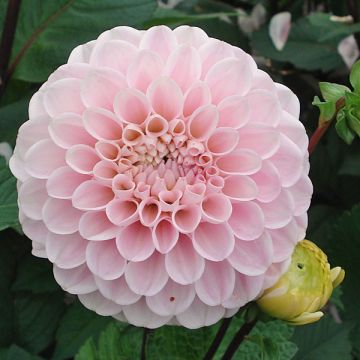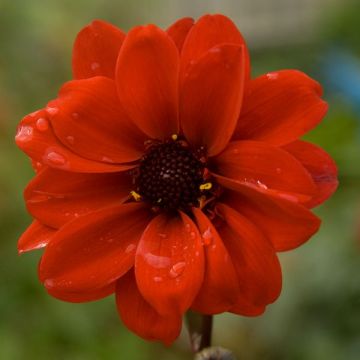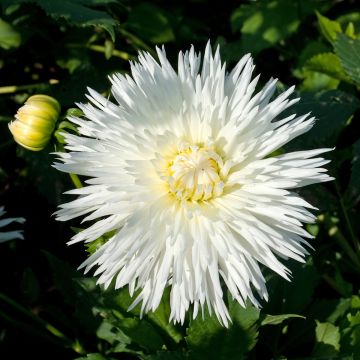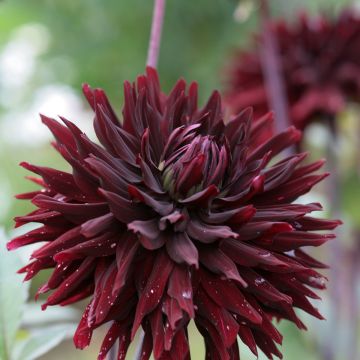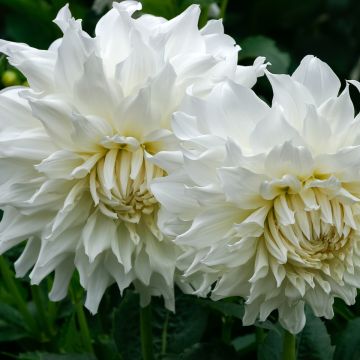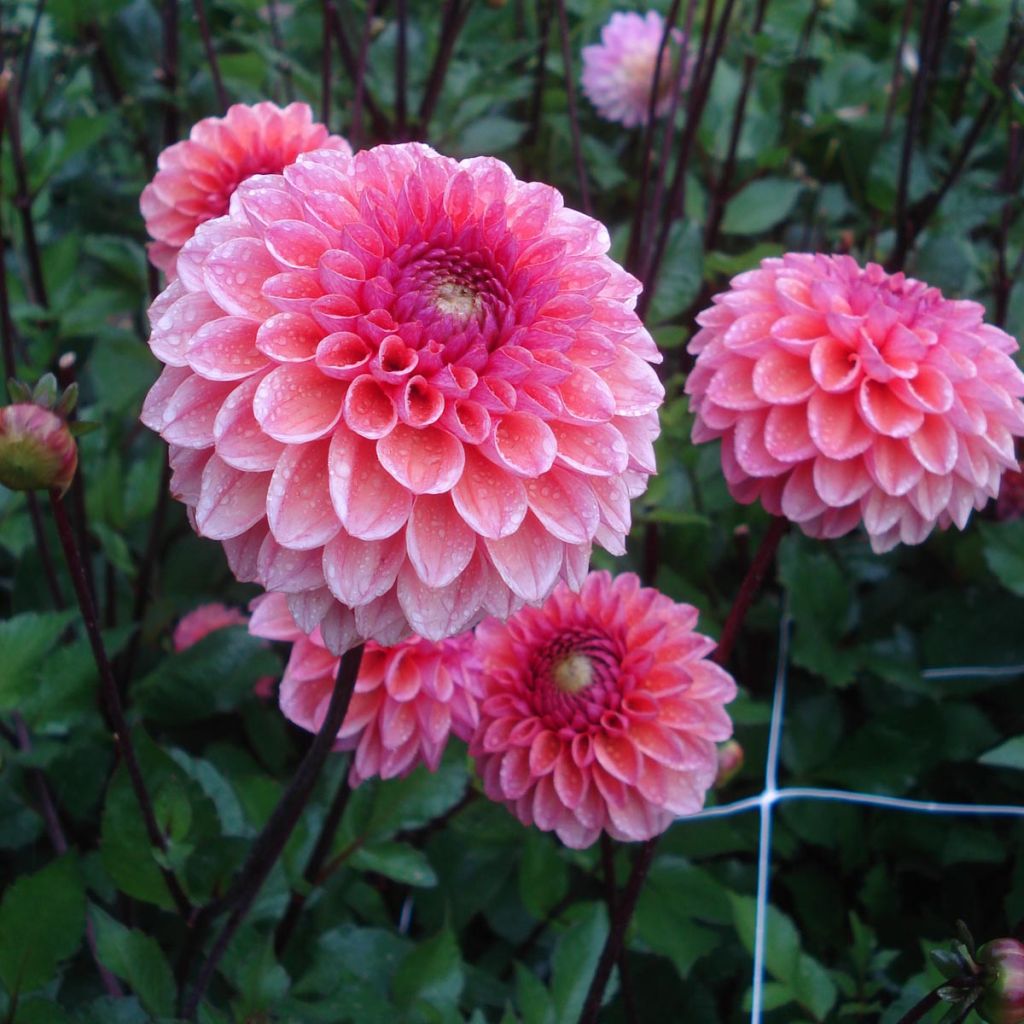

Dahlia sphériqu Daisy Duke
Dahlia Daisy Duke
Dahlia Daisy Duke
Dahlia
High-quality bulb
Marie-Ange, 11/02/2023
This item cannot be shipped to the selected country
Delivery charge from €5.90
More information
Schedule delivery date,
and select date in basket
This plant carries a 6 months recovery warranty
More information
We guarantee the quality of our plants for a full growing cycle, and will replace at our expense any plant that fails to recover under normal climatic and planting conditions.
From €5.90 for pickup delivery and €6.90 for home delivery
Express home delivery from €8.90.
Does this plant fit my garden?
Set up your Plantfit profile →
Description
Dahlia 'Daisy Duke' is classified as a decorative variety, it bears spherical flowers of soft pink colour with salmon hues.
Dahlias belong to the large family of Asteraceae, they are originally from the high plateaus of Mexico. Currently, the approximately 20,000 horticultural varieties obtained by humans have arrived in gardens all over the world, to our great pleasure, .
The full and double heads of 'Daisy Duke' form almost perfect spheres that measure 8 to 10 cm (3 to 4in) in diameter. The ligules are a soft pink colour, with a very gentle orange salmon hue, concave and overlapping in many regular rows. In the centre, a slightly darker button forms during anthesis and before ripeness. The leafy bush formed by its hollow and branching stems will reach 80 cm (32in) in height and 50 in width. The leaves are opposite and are divided into 3 or 5 denticulate leaflets. The stems and leaves are medium green.
The flowering of dahlias is exceptionally long. It starts in July and ends in November. To encourage repeat flowering, simply remove faded flowers or regularly make appealing colourful bouquets. Combine different varieties and mix them with orange roses for example.
Dahlias are easy to grow, simply plant them in a sunny spot in moderately moist soil. Their cultivation requires minimal work, however, as they need to be stored away each winter.
Traditionally essential in the gardens of priests and grandmothers, they complement summer blooms wonderfully but can also be planted in the heart of the vegetable garden to add some colour among the vegetables. Give them a touch of modernity by making more daring mixes with grasses, for example, in autumn these flower beds will be perfect.
Report an error about the product description
Dahlia Daisy Duke in pictures
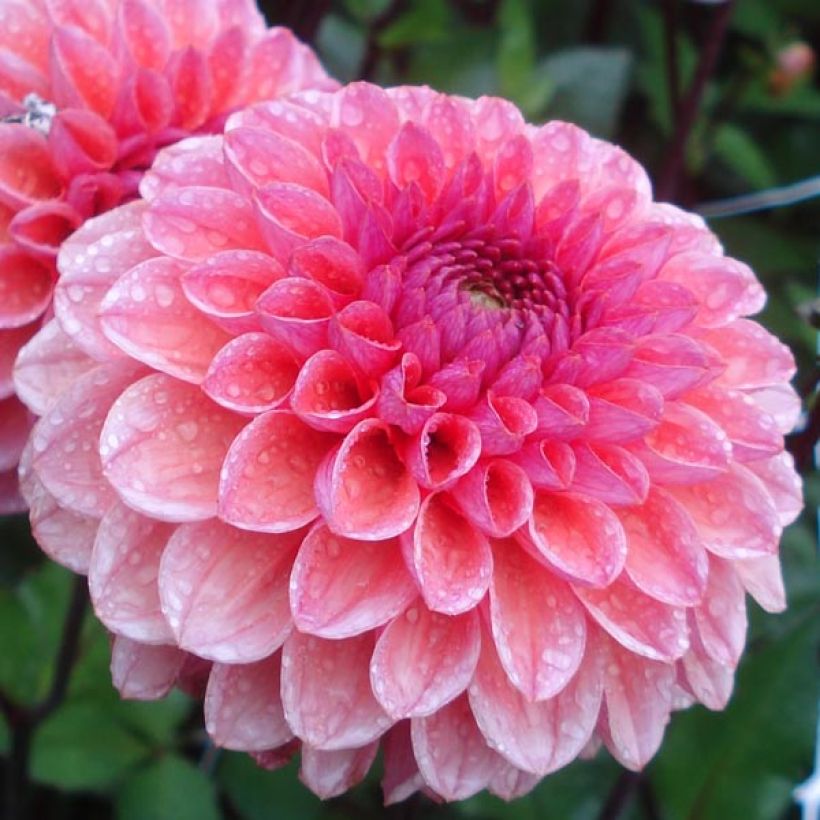

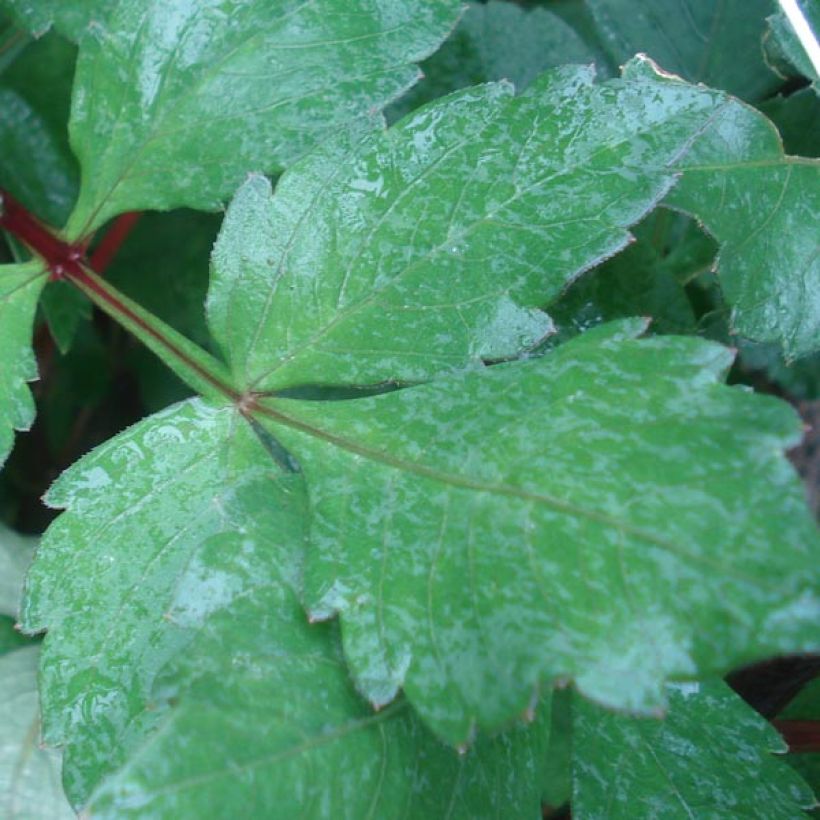

Plant habit
Flowering
Foliage
Botanical data
Dahlia
Daisy Duke
Asteraceae
Dahlia
Cultivar or hybrid
Other Ornamental Dahlias
Planting and care
The Dahlia 'Daisy Duke' is easy to grow in all regions. For abundant flowering, it is good to follow a few simple rules. Plant the tubers in full sun as soon as the last frost is over. Rich, damp, and well-drained soil is perfect. However, waterlogging would promote tuber rot. Feel free to amend the soil with compost and sand if necessary. Work the soil deeply and enrich it, for example, with bonemeal. Place your tuber and crumble the soil well to fill without air pockets. Your dahlia should be covered with about 6 cm (2in) of soil. At the end of planting, water generously once and then regularly repeat this watering during the first 6 weeks to help with rooting.
Dahlias are sensitive to cold, so they need to be overwintered. In November, the first frost blackens the foliage, which is the time to dig them up. Carefully remove the tubers, removing as much soil as possible. Let the foliage dry so that the tubers can replenish their reserves. Then cut the stems to 10 cm (4in). Spread your bulbs in a box on newspaper. Store them in a frost-free, dry, cool, and dark place, such as a frost-free garage or attic, for example. In warmer regions, or areas close to the coast, where there are few frosty days per year, it is possible to leave them in place. In this case, simply cover the ground with a carpet of leaves or straw for protection.
This tall Dahlia, with its hollow stems, does not withstand wind or heavy rain well. To overcome this disadvantage, you can stake it, but let's agree, it's not very aesthetic. However, by pinching the stems early or removing the axillary flower buds, you can make this plant spread, making it more resistant to bad weather. At the same time, you channel the sap flow to a single flower, which will become larger and sturdier.
Planting period
Intended location
Care
-
, onOrder confirmed
Reply from on Promesse de fleurs
Dahlias
Haven't found what you were looking for?
Hardiness is the lowest winter temperature a plant can endure without suffering serious damage or even dying. However, hardiness is affected by location (a sheltered area, such as a patio), protection (winter cover) and soil type (hardiness is improved by well-drained soil).

Photo Sharing Terms & Conditions
In order to encourage gardeners to interact and share their experiences, Promesse de fleurs offers various media enabling content to be uploaded onto its Site - in particular via the ‘Photo sharing’ module.
The User agrees to refrain from:
- Posting any content that is illegal, prejudicial, insulting, racist, inciteful to hatred, revisionist, contrary to public decency, that infringes on privacy or on the privacy rights of third parties, in particular the publicity rights of persons and goods, intellectual property rights, or the right to privacy.
- Submitting content on behalf of a third party;
- Impersonate the identity of a third party and/or publish any personal information about a third party;
In general, the User undertakes to refrain from any unethical behaviour.
All Content (in particular text, comments, files, images, photos, videos, creative works, etc.), which may be subject to property or intellectual property rights, image or other private rights, shall remain the property of the User, subject to the limited rights granted by the terms of the licence granted by Promesse de fleurs as stated below. Users are at liberty to publish or not to publish such Content on the Site, notably via the ‘Photo Sharing’ facility, and accept that this Content shall be made public and freely accessible, notably on the Internet.
Users further acknowledge, undertake to have ,and guarantee that they hold all necessary rights and permissions to publish such material on the Site, in particular with regard to the legislation in force pertaining to any privacy, property, intellectual property, image, or contractual rights, or rights of any other nature. By publishing such Content on the Site, Users acknowledge accepting full liability as publishers of the Content within the meaning of the law, and grant Promesse de fleurs, free of charge, an inclusive, worldwide licence for the said Content for the entire duration of its publication, including all reproduction, representation, up/downloading, displaying, performing, transmission, and storage rights.
Users also grant permission for their name to be linked to the Content and accept that this link may not always be made available.
By engaging in posting material, Users consent to their Content becoming automatically accessible on the Internet, in particular on other sites and/or blogs and/or web pages of the Promesse de fleurs site, including in particular social pages and the Promesse de fleurs catalogue.
Users may secure the removal of entrusted content free of charge by issuing a simple request via our contact form.
The flowering period indicated on our website applies to countries and regions located in USDA zone 8 (France, the United Kingdom, Ireland, the Netherlands, etc.)
It will vary according to where you live:
- In zones 9 to 10 (Italy, Spain, Greece, etc.), flowering will occur about 2 to 4 weeks earlier.
- In zones 6 to 7 (Germany, Poland, Slovenia, and lower mountainous regions), flowering will be delayed by 2 to 3 weeks.
- In zone 5 (Central Europe, Scandinavia), blooming will be delayed by 3 to 5 weeks.
In temperate climates, pruning of spring-flowering shrubs (forsythia, spireas, etc.) should be done just after flowering.
Pruning of summer-flowering shrubs (Indian Lilac, Perovskia, etc.) can be done in winter or spring.
In cold regions as well as with frost-sensitive plants, avoid pruning too early when severe frosts may still occur.
The planting period indicated on our website applies to countries and regions located in USDA zone 8 (France, United Kingdom, Ireland, Netherlands).
It will vary according to where you live:
- In Mediterranean zones (Marseille, Madrid, Milan, etc.), autumn and winter are the best planting periods.
- In continental zones (Strasbourg, Munich, Vienna, etc.), delay planting by 2 to 3 weeks in spring and bring it forward by 2 to 4 weeks in autumn.
- In mountainous regions (the Alps, Pyrenees, Carpathians, etc.), it is best to plant in late spring (May-June) or late summer (August-September).
The harvesting period indicated on our website applies to countries and regions in USDA zone 8 (France, England, Ireland, the Netherlands).
In colder areas (Scandinavia, Poland, Austria...) fruit and vegetable harvests are likely to be delayed by 3-4 weeks.
In warmer areas (Italy, Spain, Greece, etc.), harvesting will probably take place earlier, depending on weather conditions.
The sowing periods indicated on our website apply to countries and regions within USDA Zone 8 (France, UK, Ireland, Netherlands).
In colder areas (Scandinavia, Poland, Austria...), delay any outdoor sowing by 3-4 weeks, or sow under glass.
In warmer climes (Italy, Spain, Greece, etc.), bring outdoor sowing forward by a few weeks.


































